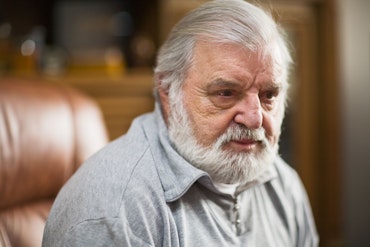Breakfast program: good start to the day
A new South Australian residential aged care facility ‘breakfast program’ initiative has ‘deinstitutionalised’ mealtimes for both residents and staff.

Some residents were reportedly disengaged during mealtimes before the Eldercare Breakfast Program Initiative was introduced.
The Eldercare Evanston Park breakfast program has been trialled in the facility's Memory Support Unit (MSU) as a key component of the Dementia Excellence program and shows that sometimes the best ideas are simple ones.
Enrolled nurse, Angela Jocey-Prior, recalls that before the program began, residents were woken by staff, between 6am and 7:30am, prepared for breakfast and given a tray.
“We had a culture of trays in our MSU. Most residents would have a tray. You’ve got cold toast, cold cereal, lukewarm cups of tea – the most unappealing start to your day. It didn’t feel like a good breakfast and people weren’t interested in eating it,” Ms Jocey-Prior says.
She says that residents were disengaged at mealtimes and there was a heavy reliance on one lifestyle staff member to ‘facilitate’ meals, with Lee-Anne Chenoweth, lifestyle coordinator describing breakfasts before the program as ‘overwhelming’.
Under the new program, the trays are simply removed and residents are given the opportunity to choose what they wanted to eat and drink from a breakfast trolley.
“We got rid of the trays here altogether,” Ms Jocey-Prior says. “We have fresh breakfasts in the facility's MSU Blue Gum now. There are still a couple of people who want trays, so for those residents breakfast is taken hot from the servery to their room,” she says.
Meredith Adams, hospitality services manager for Medirest (Eldercare’s Catering Supplier), introduced the breakfast trolley idea.
“I thought that to give residents the choice, visual aids would be better,” Ms Adams says.
The trolley features visual cues to show what is on the menu that morning. There are (empty) boxes of all the cereals being served, as well as old fashioned jam and preserve jars.
There is also a large, model slice of ‘toast’. Residents with dementia, who struggle sometimes to find the words for what they want to eat, can point to items on the trolley. Their order is then conveyed to the servery and they are then served their desired meal back at the dining table.
“The boxes of cereal jog people’s memories. If they are not communicating then their face will tell us – their face lights up – ‘ah, rice bubbles’. Their breakfasts are much more interesting, as they’re not all having the same thing,” Ms Adams says.
“They are eating so much more breakfast and having hot cups of tea. Instead of giving them a tray – of what they had for the past five years – they can make a choice, and staff let them know they can have a choice. They have the option to change what they want – everybody’s tastes change.”
Ms Jocey-Prior says the focus for staff has moved away from lists and tasks, to asking residents what they want – and the results have been positive for everyone.
“We’ve seen weight gains and not as many residents getting up overnight,” she says.
Eldercare lifestyle coordinator, Lee-Anne Chenoweth, says the changes have helped make the facility more ‘home like’ for residents.
“They aren’t institutionalised [at mealtimes], they are actually living, rather than waiting to begin their meals, waiting for our permission. It doesn’t feel like they are dependent on us.”
Another important change to the breakfast routine was to allow residents to wake when they wished, and then make their way to the dining room at their own pace. Residents are generally now waking later.
“When a person wakes up they can either have a shower or come down for breakfast,” Ms Jocey-Prior says.
“So the culture of our residents rising at five and six o’clock has changed – they now rise between 7am and 7:30am.”
Some minor adjustments have been required since the changes were introduced. Some residents were sleeping very late because the blockout curtains made their rooms too dark.
“With the blockout curtains they don’t get a sense of the time of day. From about 8.30am, staff will go into a room without waking the resident and pull back the curtains to let the natural light in, so they’re not sleeping until 12 o’clock, causing a whole new set of issues,” she says.
“We’re not waking them, but they certainly know what time of day it is. We’ve gone from really poor sleep habits to really good ones.
The team at Evanston Park are constantly reflecting and re-evaluating the program, but are so encouraged by the positive changes for staff and residents that they are planning to make some of the same changes throughout the rest of the facility.
Staff reportedly struggled with the changes at first, but they have noticed the positive response from residents. Medirest and nursing staff work together as a team and assist each other by multitasking to ensure that the residents’ dining experience is enjoyable.











![The new Aged Care Act exposure draft is slated for release in December of 2023, but advocates hope to see it rolled out on January 1, 2024. [Source: Shutterstock]](https://agedcareguide-assets.imgix.net/news/articles/wp/agedcareact__0811.jpg?fm=pjpg&w=520&format=auto&q=65)












Comments